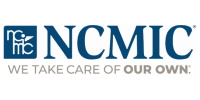BOSTON (Nov. 10, 2003)-The most important nationwide trend affecting workers compensation this year has been increases in medical costs, according to panelists speaking during the recent Business Insurance's Workers Compensation and Disability Management Conference. This "most critical" trend means that the cost of caring for injured workers' medical needs is now a larger part of each workers compensation claim dollar, said Nancy Schroeder, assistant vp-workers compensation for the National Assn. of Independent Insurers in Des Plaines, Ill., who addressed the conference late last month in Boston. According to data from the National Council on Compensation Insurance, "medical claim costs are alarming, with double-digit increases the last two years. In 2002, medical severity increased by 12%, even greater than the 2001 increase of 10.7%." Yet it is important to remember that comp care "represents only 3% to 4% of total health care expenditures," said Keith Bateman, vp and director of the Alliance of American Insurers in Downers Grove, Ill. Several factors contribute to the increasing health care costs of workers comp claims, Mr. Bateman said. While costs are up for inpatient hospital stays and specialists' fees, the increased cost and utilization of prescription drugs makes that the key contributor, he said. What's particularly troublesome for workers comp insurers is that many of the tools available to control drug spending in group health plans, such as worker co-payments and the ability to direct an employee to a particular pharmacy, are not available to them (BI, Oct. 20). In addition, employers and insurers are grappling to cope with the growing use of the painkiller OxyContin. The drug, which was originally intended for people suffering from severe long-term pain, has become one of the most popular drugs prescribed for workers comp claimants. The concern with the drug stems from its addictive nature and how some users are abusing it. Some claimants who use it become addicted while recovering from their injuries and then must go through a detoxification program before they can return to work, Ms. Schroeder said. In addition, the slow-release medication can produce a heroin-like high when consumed after being ground up. It has a street value of 10 times its cost, which may entice some workers to make money by selling it, Ms. Schroeder said. But rising medical costs are not the only national trends that have emerged this year, Ms. Schroeder said. Another trend concerns federal impingement on state workers comp programs, she said. That "is an increasing and disturbing trend," said Bruce C. Wood, assistant general counsel with the Washington-based American Insurance Assn. One of the most serious examples of that is the federal Medicare program's "far more aggressive stance" in protecting its status as "the secondary payer" of benefits to previously injured workers, he said. Consequently, Medicare is requiring employers to establish trust funds to pay the medical costs of older injured workers to help ensure that employers and their workers comp insurers primarily pay such costs, so that they are not left to Medicare, he said. The Medicare secondary-payer issue "has been increasingly disruptive" and is expected to continue because Medicare is going broke at the same time Congress is expanding the drug benefit Medicare offers under its program, Mr. Wood said. Lobbying efforts heretofore have not resolved the problem, so the next step is to get Congress to step in and define Medicare's appropriate interest in a state-based workers comp system, he said. Another example of federal impingement is a bill (H.R. 1562) approved by the House Veterans' Affairs Committee that could allow veterans to receive medical care for workers compensation claims through the U.S. Veterans' Administration. It also would permit that entity to recover full charges for any such medical care, which could increase workers comp costs, Mr. Wood said. Despite those infringement issues, some progress has been reported in resolving workers comp payers' concerns about their continued access to claimants' medical data, following enactment of the Health Insurance Portability and Accountability Act earlier this year. Payers need access to such data to resolve claims and had been concerned that physicians might respond to the privacy requirements by denying information to them, although the law's preamble expressly excludes applying those provisions in the case of workers compensation claims, Mr. Wood said. While there have been pockets of problems, the education effort appears to be succeeding, Mr. Wood said. Another national trend concerns various types of activity involving state-specific funds, which generally exist at least to provide a source of workers comp coverage, if none is available elsewhere. Developments this year include concerns about the solvency of the competitive California state fund, which, if declared insolvent, could "take down" private insurers linked to it by guaranty funds, Mr. Bateman said. Meanwhile, the Arizona state fund is suing legislators who sought to use its accumulated assets for general expenses, he said. In several states, though, there have been proposals to allow a fund to write others lines of insurance, such as medical malpractice insurance in Oregon, he said. Finally, workers comp insurers continue to be concerned about state funds that seek to write workers comp insurance outside their borders while still maintaining their federal tax exemption, he said. That exemption reduces their cost of operation relative to their private insurers, who have complained that their entry into the marketplace constitutes unfair competition. This information is reprinted with permission of the Business Insurance. Copyright 2004. To learn more visit Business Insurance website:
Source




